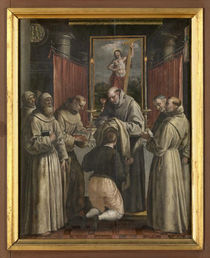The Catholic Defender: Mother of Perpetual Help Devotion, Mary our help
- Donald Hartley

- Jul 10
- 2 min read

Since 1866 the Redemptorists have spread devotion to the Blessed Virgin Mary under the icon and title of Our Mother of Perpetual Help (also known as Our Lady of Perpetual Help).
According to tradition, the ancient Byzantine icon of Our Mother of Perpetual Help was stolen from a church in Crete, where many miracles had occurred.
The image remained in the private possession of a Roman merchant and his family until 1499, when it was publicly displayed in the Church of St. Matthew in Rome between the Basilicas of St. Mary Major and St. John Lateran.
When St. Matthew’s was destroyed in 1789, the icon was rescued and hung in an obscure monastery chapel until the Redemptorists learned that the site of their new headquarters in Rome had once been the site of St. Matthew’s, the one-time home of a miraculous icon of Our Lady.
A Redemptorist priest who as a young man had frequented the monastery chapel that displayed the icon informed his brothers where to find the image.
The Redemptorists asked Pope Pius IX for permission to move the icon to their new church, San Alfonso, which was built on the location of the icon’s earlier home. The pope granted his permission and told the Redemptorists to “make her known throughout the world.”

The Symbolism of the Icon
In the Eastern world, religious art is seen as an extension of God’s presence in creation. Icons are much more than beautiful images: they’re meant to help us connect directly with God.
The artist who writes the icon strives to illuminate the viewer’s soul with divine truth. Above is a photo of the icon of Our Lady of Perpetual Help—the most widely known icon in the world. This sacred image has special importance for the Redemptorists, who were asked by Pope Pius IX to “make her known throughout the world.”
Each element of the icon has a specific meaning:
Mary’s eyes, filled with compassion and love, are directed toward us.
Our Lady is clothed in the colors of virgins (red) and of mothers (blue). These are also royal colors.
Jesus, depicted as a young boy, wears the colors of a king.
The star on Mary’s veil reminds us that she is the dawn announcing the coming of Christ.
Our Lady’s hands hold her Son securely, and her right hand directs our gaze to Him.
The Christ Child grasps his mother’s hand as though he is frightened by what he sees.
In His hurry to reach his mother, Jesus has almost lost one of his sandals. He became human, like us, in all things but sin.
On Our Lady’s left and right we see the reasons for the child’s fear. On the right is the Archangel Gabriel, holding a cross and four nails. On the left is the Archangel Michael, holding a lance, a pole with a sponge, and a vessel of vinegar. This vision of the instruments of the crucifixion has driven the young Jesus to his mother’s protective embrace.
Yet Our Lady’s gaze is fixed on us, her children on earth. She is our source of constant comfort and hope.





















Comments